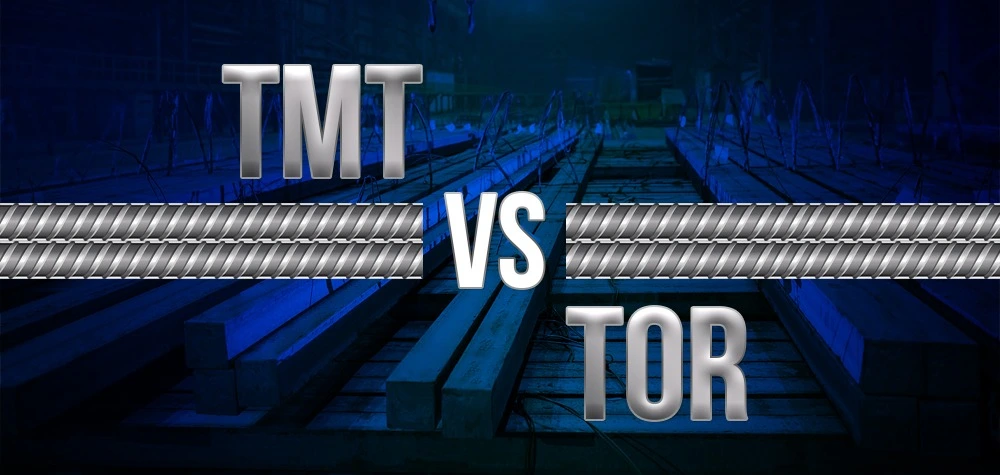A Comprehensive Guide to Steel Bar Sizes and Their Applications
What is a steel bar?
Steel bars, also known as reinforcement bars or rebars, are solid, long metal bars which are generally used in construction projects in order to reinforce structures such as buildings, dams, bridges etc. It supports and strengthens the bar material typically concrete when it is under tension. Steel bars are mostly used to reinforce concrete structures with an additional layer. Steel bars are the most often utilized steel product in construction industries because they are sturdy, versatile, and cost-effective for builders.
Types of Steel Bars
Carbon Steel Bars
Carbon steel bars are utilized in situations where ultimate tensile strength is required. They are made of carbon and iron. Their ductility and corrosion resistance, however, are significantly less. Carbon steel bars are used to manufacture a variety of machine components, equipment, and other applications in industries.
TMT Bars
Thermo mechanically treated, or TMT, bars are regarded as a vital component essential to constructing buildings. The TMT bars typically have a standard length, although their diameters vary. There are different steel bar sizes on the market.
Hot Rolled Bars
Hot rolled deformed bars are the type of reinforced steel bar most commonly used in R.C.C. constructions. In addition to being incredibly strong, hot-rolled deformed bars are also incredibly durable. With its immense strength, this kind of bar is suitable for any kind of building project.
Cold-Rolled Steel Bars
Cold-rolled steel bars are reinforcement bars that are produced by treating hot-rolled steel bars. Throughout the entire process, hot-rolled bars are incorporated into the cold work process.
Mild Steel Bars
One form of steel bar that has been utilized in building construction for a long time is a mild steel bar or MS bar. In contrast to the wrapped structure seen on other types of bars, MS bars have a plain outer layer or surface and lower tensile yield strength.
The Different Sizes and Application of Steel Bars
The properties of TMT bars, such as their resistance to corrosion and fire, make them the perfect material for use in marine structures. TMT bars are additionally earthquake-resistant. They are therefore perfect for usage in areas where seismic activity is common. They come in different sizes, the steel bars in mm are 8mm, 10mm, 12mm and 16mm. TMT bars are extensively utilized in the construction industry. Some of the common uses of TMT bars are:
- Marine structures
- High-rise buildings
- Industrial structures
- Bridges and heavy-duty infrastructure operations
Steel bars in the diameters of 8mm, 10mm, 12mm, and 16mm are the ones most widely utilized.
The 8mm Steel Bar
For architectural projects, an 8mm steel rod is a popular choice because of its cost-effectiveness, high elongation, and adaptability. An 8mm steel rod weighs about 4.6 kg. Owing to its small weight, it can be used in areas where significant loads are not necessary. It is also easier to handle during construction because of its smaller diameter. 8mm steel rods are often used in structures such as stairways and slabs.
The 10mm Steel Bar
The 10mm steel rod has a higher load-bearing ability and strength. It weighs about 7.1 kg per rod. Projects requiring a moderate amount of reinforcement often use it. These 10mm steel rods are specifically used for building roofs and lintels.
The 12 mm Steel Bar
The 12mm steel bar weighs about 10.4 kg per rod. The 12mm steel rod is used for projects that require a higher level of structural stability. It provides improved durability and strength. This size is used by architects to build sturdy buildings that can handle huge weights as well as external impacts, making them appropriate for both small- and large-scale residential projects. The primary application for these 12mm steel rods is in the building of roof-supporting beams.
The 16mm Steel Bar
In terms of heavy-duty construction, the 16mm steel rod takes the forefront. Outstanding strength and load-bearing capacity are provided by this diameter. It is used in large-scale construction projects where structural stability is crucial, such as high-rise buildings and bridges. 192.2 kg is the weight of one 16mm steel rod. These 16 mm steel rods are also used in the building of beams and columns according to the corresponding structural designs.
To sum up, architectural design greatly depends on the weight differences of 8mm, 10mm, 12mm, and 16mm steel bars. The project’s requirements will determine the right size, which will take into account cost-effectiveness, structural soundness, and load-bearing capacity. Architects may guarantee the performance and endurance of their structures by making well-informed judgments based on their grasp of weight differences and their implications.
To find the best TMT bars, head to ARS Steel, the leading TMT manufacturer in India. To find out more about reinforcement bars, their types and advantages, you can visit their website.




